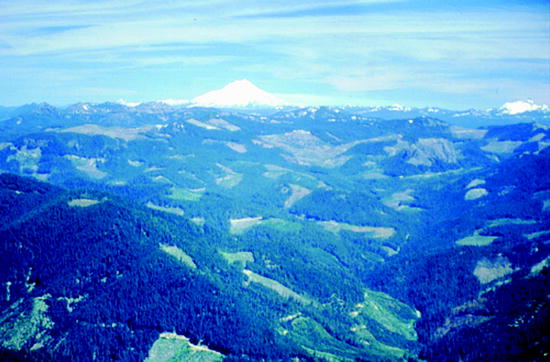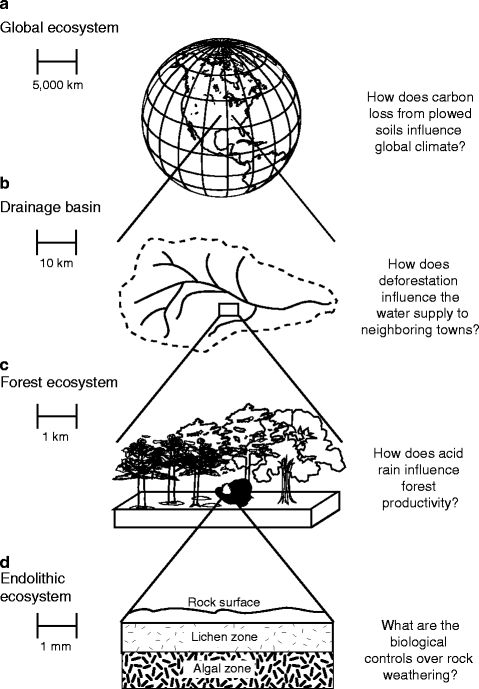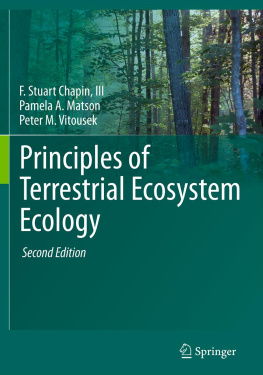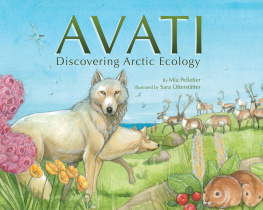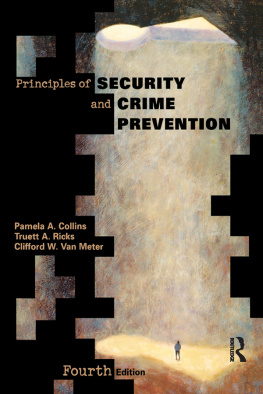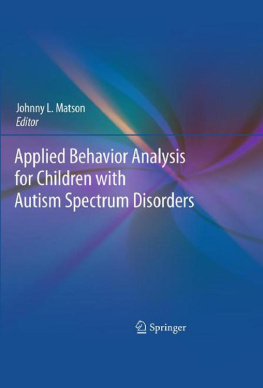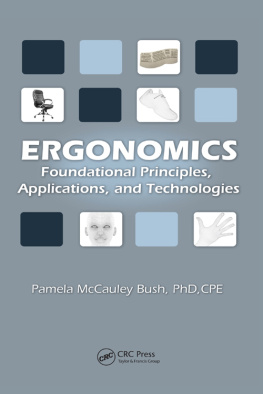Ecosystem ecology studies the links between organisms and their physical environment within an Earth-System context. This chapter provides background on the conceptual framework and history of ecosystem ecology.
Introduction
Ecosystem ecology addresses the interactions between organisms and their environment as an integrated system. The ecosystem approach is fundamental to managing Earths resources because it addresses the interactions that link biotic systems, of which people are an integral part, with the physical systems on which they depend. The approach applies at the scale of Earth as a whole, the Amazon River basin, or a farmers field. An ecosystem approach is critical to the sustainable management and use of resources in an era of increasing human population and consumption and large, rapid changes in the global environment.
The ecosystem approach has grown in importance in many areas. The United Nations Convention on Biodiversity of 1992, for example, promoted an ecosystem approach, including humans, for conserving biodiversity rather than the more species-based approaches that predominated previously. There is growing appreciation for the role that species interactions play in the functioning of ecosystems (Daz et al. ).
Overview of Ecosystem Ecology
The flow of energy and materials through organisms and the physical environment provides a framework for understanding the diversity of form and functioning of Earths physical and biological processes. Why do tropical forests have large trees but accumulate only a thin layer of dead leaves on the soil surface, whereas tundra supports small plants but an abundance of organic matter at the soil surface? Why does the concentration of carbon dioxide in the atmosphere decrease in summer and increase in winter? What happens to nitrogen fertilizer that farmers add to their fields but do not harvest with the crop? Why has the introduction of exotic grasses to pastures caused adjacent forests to burn? These are representative of the questions addressed by ecosystem ecology. Answers to these questions require an understanding of the interactions between organisms and their physical environments both the response of organisms to environment and the effects of organisms on their environment. These questions also require a focus on integrated ecological systems rather than individual organisms or physical components.
Ecosystem analysis seeks to understand the factors that regulate the pools (quantities) and fluxes (flows) of materials and energy through ecological systems. These materials include carbon, water, nitrogen, rock-derived elements such as phosphorus, and novel chemicals such as pesticides or radionuclides that people have added to the environment. These materials are found in abiotic (nonbiological) pools such as soils, rocks, water, and the atmosphere and in biotic pools such as plants, animals, and soil microorganisms (microbes).
An ecosystem consists of all the organisms and the abiotic pools with which they interact. Ecosystem processes are the transfers of energy and materials from one pool to another. Energy enters an ecosystem when light energy drives the reduction of carbon dioxide (CO2) to form sugars during photosynthesis. Organic matter and energy are tightly linked as they move through ecosystems. The energy is lost from the ecosystem when organic matter is oxidized back to CO2 by combustion or by the respiration of plants, animals, and microbes. Materials move among abiotic components of the system through a variety of processes, including the weathering of rocks, the evaporation of water, and the dissolution of materials in water. Fluxes involving biotic components include the absorption of minerals by plants, the fall of autumn leaves, the decomposition of dead organic matter by soil microbes, the consumption of plants by herbivores, and the consumption of herbivores by predators. Most of these fluxes are sensitive to environmental factors such as temperature and moisture, and to biological factors regulating the population dynamics and species interactions in communities. The unique contribution of ecosystem ecology is its focus on biotic and abiotic factors as interacting components of a single integrated system.
Ecosystem processes can be studied at many spatial scales. How big is an ecosystem? Ecosystem processes take place at a wide range of scales, but the appropriate scale of study depends on the question asked (Fig. ).
Fig. 1.2
Examples of ecosystems that range in size by ten orders of magnitude: an endolithic ecosystem in the surface layers of rocks (1 103 m in height), a forest 1 103 m in diameter, a drainage basin (1 10 5 m in length), and Earth (4 107 m in circumference). Also shown are examples of questions appropriate to each scale
Some questions require careful measurements of lateral transfers of materials. A watershed is a logical unit to study the impacts of forests on the quantity and quality of the water that supplies a town reservoir. A drainage basin , also known as a catchment or watershed, consists of a stream or river and all the terrestrial surfaces that drain into it. By studying a drainage basin, we can compare the quantities of materials that enter from the air and rocks with the amounts that leave in stream water, just as you balance your checkbook. Studies of inputoutput budgets of drainage basins have improved our understanding of the interactions between rock weathering, which supplies nutrients, and plant and microbial growth, which retains nutrients in ecosystems (Vitousek and Reiners ).
The upper and lower boundaries of an ecosystem also depend on the question asked and the scale that is appropriate to the question. The atmosphere, for example, extends from the gases between soil particles to the edge of outer space. The exchange of CO2 between a forest and the atmosphere might be measured a few meters above the top of the canopy where variation in CO2 concentration largely reflects processes occurring within the forest rather than in upwind ecosystems. The regional impact of grasslands on the moisture content of the atmosphere might, however, be measured at a height of several kilometers above the ground, where the moisture released by the ecosystem condenses and returns as precipitation (see ).
